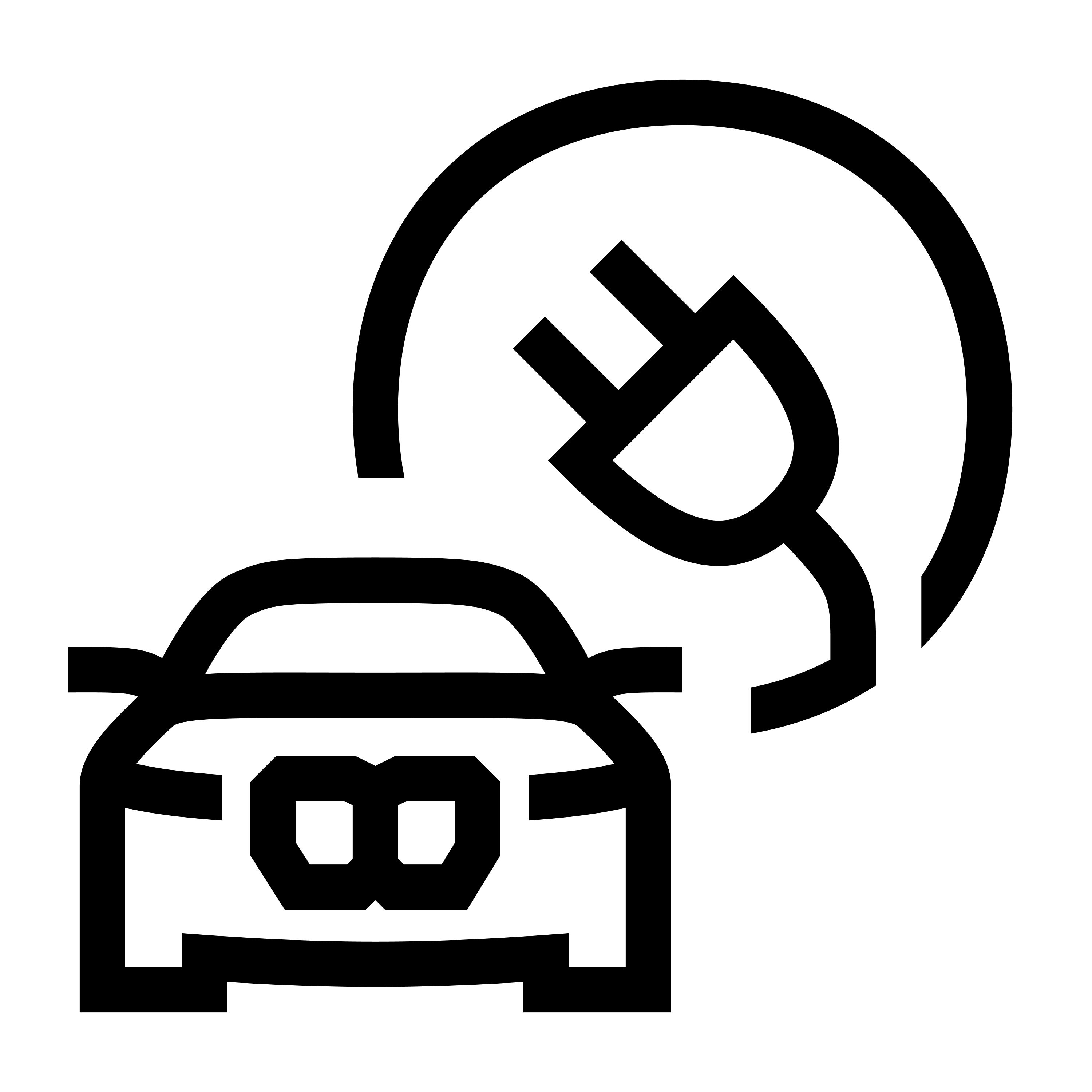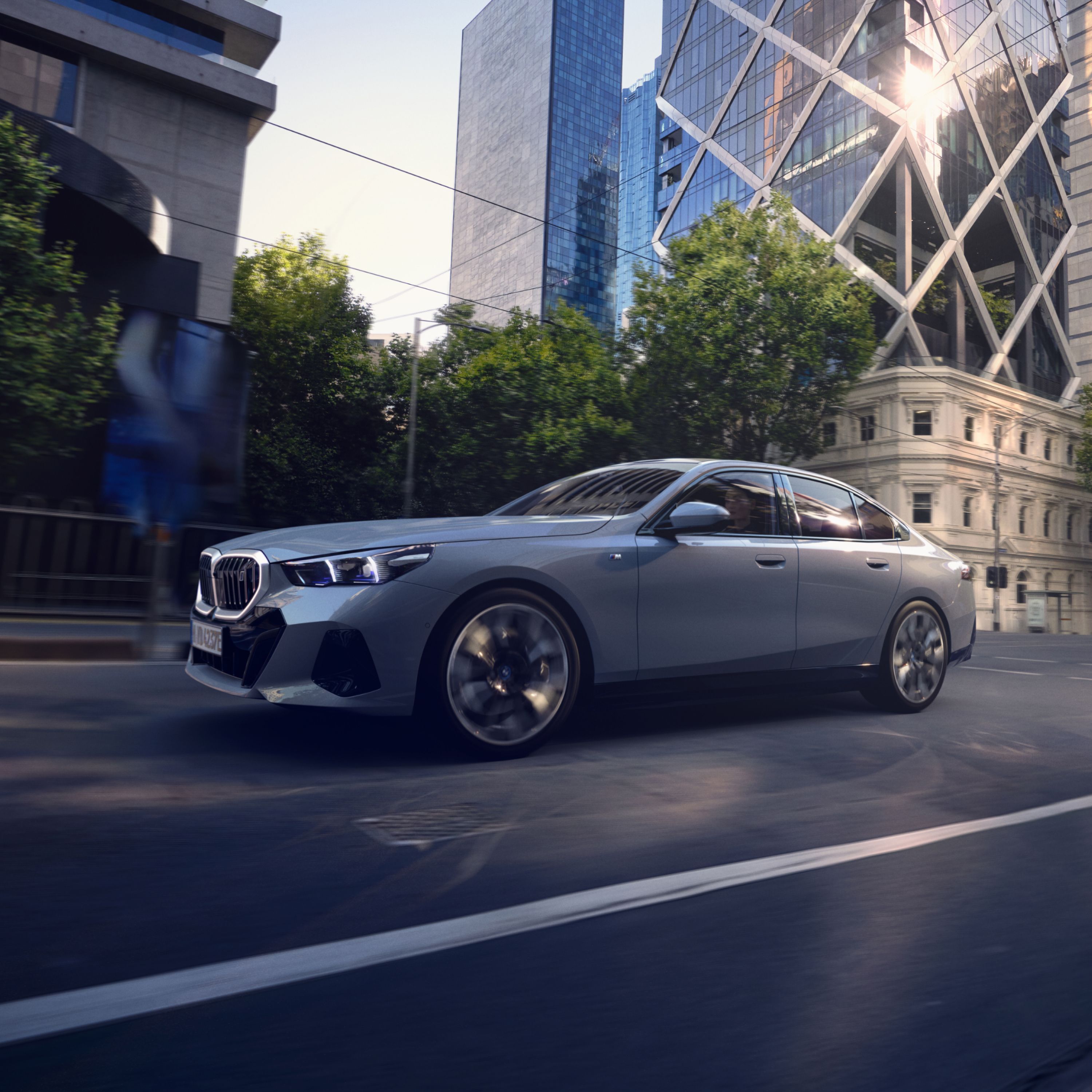BMW iX3: Energy consumption, combined WLTP in kWh/100 km[1]: 18.0-17.6; Electric range, WLTP in km[2]: 461-471
BMW iX M60: Energy consumption, combined WLTP in kWh/100 km[1]: 24.7-22 ; Electric range, WLTP in km[2]: 566–499
Experience the future of e-mobility with the wide range of models from the BMW i Series. Electric cars from compact small cars to elegant Sedans, spacious Tourings and fully electric SUVs – our fully electric ranges get you to your destination on everyday trips and longer journeys.
THE WIDE RANGE OF BMW ELECTRIC CAR MODELS.


BMW i4 eDrive40 Gran Coupé: Energy consumption, combined WLTP in kWh/100 km[1]: 18.6–15.4; Electric range, WLTP in km[2]: 590
BMW i7 xDrive60: Energy consumption, combined WLTP in kWh/100 km[1]: 19.6–19.2; Electric range, WLTP in km[2]: 589–602
BMW i4 M50 xDrive: Energy consumption, combined WLTP in kWh/100 km[1]: 22.5 - 18; Electric range, WLTP in km[2]: 415 - 520
BMW i5 M60 xDrive Sedan: Energy consumption, combined WLTP in kWh/100 km[1]: 20.5–18.2; Electric range, WLTP in km[2]: 457–516
{model.description}: Energy consumption, combined WLTP in kWh/100 km[1]: {techdata.electricConsumption}; Electric range, WLTP in km[2]: {techdata.electricRangeWltpCombined}
BMW iX2 eDrive20: Energy consumption, combined WLTP in kWh/100 km[1]: 16.9 - 15.3; Electric range, WLTP in km[2]: 439–478
{model.description}: Energy consumption, combined WLTP in kWh/100 km[1]: {techdata.electricConsumption}; Electric range, WLTP in km[2]: {techdata.electricRangeWltpCombined}
BMW iX1 eDrive20: Energy consumption, combined WLTP in kWh/100 km [1]: 17.2–15.4; Electric range, WLTP in km[2]: 430–474
BMW iX3: Energy consumption, combined WLTP in kWh/100 km[1]: 18.0-17.6; Electric range, WLTP in km[2]: 461-471
BMW iX M60: Energy consumption, combined WLTP in kWh/100 km[1]: 24.7-22 ; Electric range, WLTP in km[2]: 566–499
ELECTRIC CAR OFFERS
FIND YOUR BMW ELECTRIC CAR.

YOUR NEW BMW ELECTRIC CAR.
Find available BMW models and buy or lease your BMW directly online. Fully electric cars and plug-in hybrids. For example, the BMW iX, the BMW i4 or the BMW i5. There are many offers to choose from.

USED BMW ELECTRIC CARS.
Used BMW cars have no reason to hide. The same of course applies to BMW’s electric cars. Find available used BMW electric cars, for sale or to lease.
THE BENEFITS OF BMW ELECTRIC CARS.

LOCALLY EMISSION-FREE.
Now you can drive locally emission-free and almost silently on shorter trips or around town. This means that you can reduce your CO2 emissions and noise levels in town, and at the same time set an example of environmentally-conscious mobility. Find out more about how e-mobility impacts our environment.

CHARGING MADE EASY.
Use your own wallbox to charge your electric car conveniently from the comfort of your own home. Charge it overnight to start the day with a charged battery. The benefits of having your own charging station: you save time and your electric car charges reliably at home.

LOW RUNNING COSTS.
Reduce CO2 and save costs. The ongoing service costs of an electric car are lower compared to a combustion engine car. As some parts are not susceptible to wear, like spark plugs, oil filters or an exhaust system, the service costs are lower.

HOW TO POSITIVELY IMPACT THE SERVICE LIFE OF YOUR ELECTRIC CAR BATTERY.
Find out how the battery and electric motor of an electric car work. How you can positively influence the life of the high-voltage battery. And how quietly and powerfully an electric car accelerates and cleverly recovers energy when you brake.

ELECTRIC CAR RANGE
FAR. FURTHER. ELECTRIC RANGE.
Get to far-flung destinations with ease with the range of our electric cars. The charge-optimised route planner in the vehicle automatically finds the best and fastest charging options along the route according to your needs. At the same time, an anticipatory and even driving style further increases the range of your electric car. You can conveniently plan your route in advance from the comfort of your home on the My BMW app.

CAREFREE CHARGING OF YOUR ELECTRIC CAR.
Find out more about modern charging technologies in a convenient charging infrastructure and the different types of charging with BMW Charging. Whether you need a fast charge on a long journey, near a café, or conveniently at your home using a wallbox. Find the right charging option for your electric car, to suit your lifestyle.
FOR CUSTOMERS BY CUSTOMERS: ELECTROMOBILITY IN EVERYDAY LIFE.
"I quickly realised how much fun driving an electric vehicle can be."
Once BMW, always BMW. Once electric, always electric. Watch the video to see how a long-time fan of sporty combustion engines discovered the fascination and driving pleasure of fully electric mobility.





THE COST OF AN ELECTRIC CAR.
What does it cost to charge an electric car? Save money with lower service costs and lower taxes. Are there subsidies or incentives for electric cars? Find out if an electric car makes sense for you.

PLUG-IN HYBRID: FLEXIBLY ON THE GO.
BMW plug-in hybrid models combine the best of both worlds. You can now drive locally emission-free with an electric drive on shorter trips or around town. And, as usual, their petrol engine will support you on longer journeys.

HYDROGEN AS THE FUEL OF THE FUTURE.
With the BMW iX5 Hydrogen concept car, BMW is presenting an innovative hydrogen vehicle. The BMW iX5 Hydrogen only needs 3-4 minutes to refuel for a range of up to 504 km. This means you can use it as you would a car with a regular combustion engine, while offering you all the advantages of electric mobility.
FREQUENTLY ASKED QUESTIONS.
MORE INFORMATION.

TEST DRIVE THE BMW MODEL OF YOUR CHOICE.
Would you like to experience for yourself how your ideal electric model drives and feels? Simply arrange an online appointment for a test drive when it suits you. Your local BMW partner will contact you with all the information you need.

WOULD YOU LIKE A PERSONAL CONSULTATION?
Please contact your local BMW dealership with any questions or for more information or a quotation. Our professional BMW service personnel will be happy to advise you by phone or in person.

BMW CUSTOMER SUPPORT.
BMW Customer Support is on hand to help you with all BMW-related issues – so that you get answers to all your questions: whether you're an existing BMW driver or are planning to purchase a new BMW.
Consumption and CO2 emissions.
BMW i4 eDrive40 Gran Coupé: Energy consumption, combined WLTP in kWh/100 km[1]: 18.6–15.4; Electric range, WLTP in km[2]: 590
BMW i7 xDrive60: Energy consumption, combined WLTP in kWh/100 km[1]: 19.6–19.2; Electric range, WLTP in km[2]: 589–602
BMW i4 M50 xDrive: Energy consumption, combined WLTP in kWh/100 km[1]: 22.5 - 18; Electric range, WLTP in km[2]: 415 - 520
BMW i5 M60 xDrive Sedan: Energy consumption, combined WLTP in kWh/100 km[1]: 20.5–18.2; Electric range, WLTP in km[2]: 457–516
{model.description}: Energy consumption, combined WLTP in kWh/100 km[1]: {techdata.electricConsumption}; Electric range, WLTP in km[2]: {techdata.electricRangeWltpCombined}
BMW iX2 eDrive20: Energy consumption, combined WLTP in kWh/100 km[1]: 16.9 - 15.3; Electric range, WLTP in km[2]: 439–478
{model.description}: Energy consumption, combined WLTP in kWh/100 km[1]: {techdata.electricConsumption}; Electric range, WLTP in km[2]: {techdata.electricRangeWltpCombined}
BMW iX1 eDrive20: Energy consumption, combined WLTP in kWh/100 km [1]: 17.2–15.4; Electric range, WLTP in km[2]: 430–474
BMW iX3: Energy consumption, combined WLTP in kWh/100 km[1]: 18.0-17.6; Electric range, WLTP in km[2]: 461-471
BMW iX M60: Energy consumption, combined WLTP in kWh/100 km[1]: 24.7-22 ; Electric range, WLTP in km[2]: 566–499
The values of fuel consumptions, CO2 emissions and energy consumptions shown were determined according to the European Regulation (EC) 715/2007 in the version applicable at the time of type approval. The figures refer to a vehicle with basic configuration in Germany and the range shown considers optional equipment and the different size of wheels and tires available on the selected model.
The CO2 efficiency specifications are determined according to Directive 1999/94/EC and the European Regulation in its current version applicable. The values shown are based on the fuel consumption, CO2 values and energy consumptions according to the NEDC cycle for the classification.
When charging times are shown they can be affected by a number of factors such as type of charger, voltage supplied to the charger/car and type of current (AC or DC) supplied to the charger/car. The car also plays a role in charging times as it can be set by the driver to accept various different amperage and should preconditioning be used to heat or cool the vehicle while charging this will also affect the charging time.
The basis for the calculation of the charging times for 100 km range is the electric consumption of the vehicle based on the use of a high-Powered Charging station (HPC) or charging type and current as indicted in the literature above. The testing procedure measures are based on a 23 degrees Celsius battery start and ambient temperature with certification values excluding additional auxiliary consuming devices and systems within the vehicle such as seat heating, displays, air conditioning.
Individual consumption (fuel economy) may differ due to driving profile, vehicle load profile, auxiliary consumer usage, temperature, and ambient conditions. Consumption is based on WLTP or NEDC (whichever is indicated) best case conditions and is independently tested for BMW Group. If you are comparing this range with other models or brands make sure they are stating the same WLTP or NEDC testing regime. These results can be used to compare vehicles on a close to “like for like” basis but are unlikely to be achieved in real world conditions for reasons including temperature variation, driving conditions and the use of the auxiliary systems referred to above.
Information provided and images displayed on this site include overseas models and may show some features not available in New Zealand. Please contact an authorised BMW dealer for specific information on vehicles and features available in New Zealand. Product changes may have been made since production of this content.
[1] Official data for fuel consumption, CO2 emissions, power consumption and electric range was determined in accordance with the prescribed measuring procedure and corresponds to European Regulation (EC) 715/2007 in the applicable version. For ranges, data determined as per WLTP takes into account any optional equipment (available on the German market in this case). For vehicles that have been newly type approved since 1 January 2021, only the official data according to WLTP exists. In addition, NEDC values are deleted from the certificates of conformity as of 1 January 2023 by EC regulation 2022/195. For more information about NEDC and WLTP measuring procedures visit www.bmw.com/wltp
Further information about fuel consumption and official model-specific CO2 emissions of new passenger cars can be found in the "Guideline for fuel consumption, CO2 emissions and electric power consumption for new passenger cars", available free of charge at all points of sale, at the Deutsche Automobil Treuhand GmbH (DAT), Hellmuth-Hirth-Str. 1, 73760 Ostfildern-Scharnhausen, Germany, and under https://www.dat.de/co2/.
[2] Range depends on various factors, in particular: individual driving style, route characteristics, outside temperature, heating/air conditioning, pre-conditioning.
[3] The charging performance depends on the state of charge, ambient temperature, individual driving profile and use of auxiliary consumers. The ranges shown are based on the WLTP best case. The charging times apply to ambient temperatures of 23 degrees Celsius after a preceding drive and may differ depending on the usage behaviour.


